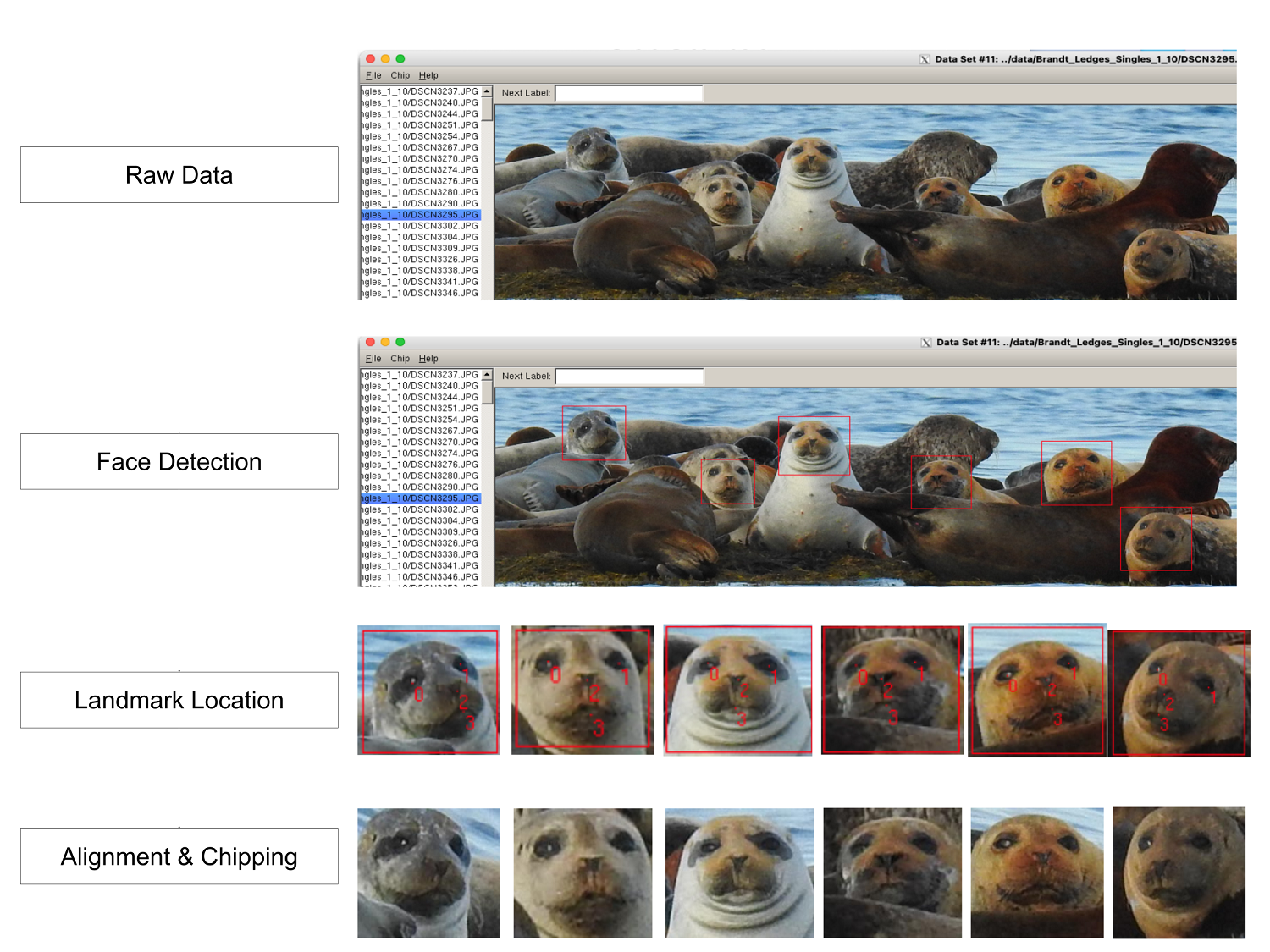Facial recognition works on seals. No, really.
This article was originally featured on Hakai Magazine, an online publication about science and society in coastal ecosystems. Read more stories like this at hakaimagazine.com.
Have you ever looked at a seal and thought, Is that the same seal I saw yesterday? Well, there could soon be an app for that based on new seal facial recognition technology. Known as SealNet, this seal face-finding system was developed by a team of undergraduate students from Colgate University in New York.
Taking inspiration from other technology adapted for recognizing primates and bears, Krista Ingram, a biologist at Colgate University, led the students in developing software that uses deep learning and a convolutional neural network to tell one seal face from another. SealNet is tailored to identify the harbor seal, a species with a penchant for posing on coasts in haulouts.
The team had to train their software to identify seal faces. “I give it a photograph, it finds the face, [and] clips it to a standard size,” says Ingram. But then she and her students would manually identify the nose, the mouth, and the center of the eyes.
For the project, team members snapped more than 2,000 pictures of seals around Casco Bay, Maine, during a two-year period. They tested the software using 406 different seals and found that SealNet could correctly identify the seals’ faces 85 percent of the time. The team has since expanded its database to include around 1,500 seal faces. As the number of seals logged in the database goes up, so too should the accuracy of the identification, Ingram says.
 The developers of SealNet trained a neural network to tell harbor seals apart using photos of 406 different seals. Birenbaum et al.
The developers of SealNet trained a neural network to tell harbor seals apart using photos of 406 different seals. Birenbaum et al.As with all tech, however, SealNet is not infallible. The software saw seal faces in other body parts, vegetation, and even rocks. In one case, Ingram and her students did a double take at the uncanny resemblance between a rock and a seal face. “[The rock] did look like a seal face,” Ingram says. “The darker parts were about the same distance as the eyes … so you can understand why the software found a face.” Consequently, she says it’s always best to manually check that seal faces identified by the software belong to a real seal.
Like a weary seal hauling itself onto a beach for an involuntary photo shoot, the question of why this is all necessary raises itself. Ingram believes SealNet could be a useful, noninvasive tool for researchers.
Of the world’s pinnipeds—a group that includes seals, walruses, and sea lions—harbor seals are considered the most widely dispersed. Yet knowledge gaps do exist. Other techniques to track seals, such as tagging and aerial monitoring, have their limitations and can be highly invasive or expensive.
Ingram points to site fidelity as an aspect of seal behavior that SealNet could shed more light on. The team’s trials indicated that some harbor seals return to the same haulout sites year after year. Other seals, however, such as two animals the team nicknamed Clove and Petal, appeared at two different sites together. Increasing scientists’ understanding of how seals move around could strengthen arguments for protecting specific areas, says Anders Galatius, an ecologist at Aarhus University in Denmark who was not involved in the project.
Galatius, who is responsible for monitoring Denmark’s seal populations, says the software “shows a lot of promise.” If the identification rates are improved, it could be paired with another photo identification method that identifies seals by distinctive markings on their pelage, he says.
In the future, after further testing, Ingram hopes to develop an app based on SealNet. The app, she says, could possibly allow citizen scientists to contribute to logging seal faces. The program could also be adapted for other pinnipeds and possibly even for cetaceans.
By accepting you will be accessing a service provided by a third-party external to https://oc3anclub.com/

